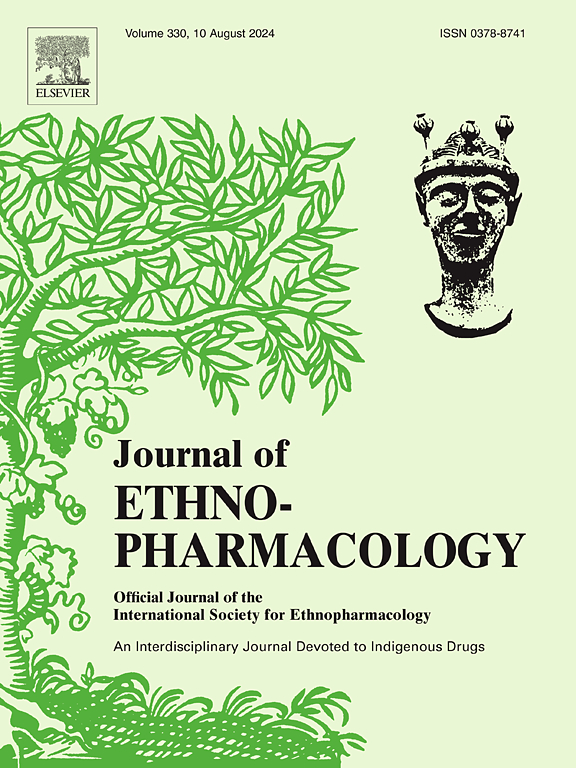Saffron and its active constituents ameliorate hypercholesterolemia by inhibiting PCSK9 and modulating Sortilin, LDLR, and SREBP-2 signaling in high fat diet induced hypercholesterolemic C57BL/6 mice
IF 4.8
2区 医学
Q1 CHEMISTRY, MEDICINAL
引用次数: 0
Abstract
Ethnopharmacological relevance
Saffron (Crocus sativus L.) has long been used in Ayurveda, Iranian, and Chinese traditional medicine as a natural remedy for hypercholesterolemia, obesity, and liver disorders though its therapeutic mechanism remains unclear.
Aim of the study
This study explores the mechanism by which saffron extract (SE), crocin (CN), and crocetin (CR) mitigate high fat diet (HFD) induced hypercholesterolemia and hepatic inflammation in C57BL/6 mice, focusing on their inhibition of proprotein convertase subtilisin/kexin type 9 (PCSK9).
Materials and methods
C57BL/6 mice (N = 10/group) were fed either a, normal diet, HFD, or HFD supplemented with SE, CN, CR, or atorvastatin for 12 weeks. Plasma lipids and inflammatory markers were measured. Histopathological changes were assessed via H&E and Sudan black staining. Gene expression was analyzed using qRT-PCR, and ligand-protein interactions were studied using molecular docking, simulation, and thermophoresis.
Results
HFD-fed mice exhibited dyslipidemia, liver damage, and inflammation, which SE, CN, and CR significantly improved. Treatments reduced cholesterol, triglycerides, and reactive oxygen species, reversed fatty liver degeneration, and downregulated PCSK9 and sortilin expression while upregulating LDLR. They suppressed transcription factors SREBP-1C and SREBP-2 and reduced inflammatory markers, including TNF-α, while increasing IL-10 expression. CR reduced plasma PCSK9 secretion by 39.9 % (p < 0.05). Docking and simulation studies confirmed the strong binding potential of CR and CN to PCSK9.
Conclusion
Saffron and its active components (CN and CR) are novel natural PCSK9 inhibitors that effectively ameliorate hypercholesterolemia by modulating sortilin, LDLR and SREBP-2 pathway, potentially opening the way for developing new therapeutic approaches for managing cholesterol related disorders.

求助全文
约1分钟内获得全文
求助全文
来源期刊

Journal of ethnopharmacology
医学-全科医学与补充医学
CiteScore
10.30
自引率
5.60%
发文量
967
审稿时长
77 days
期刊介绍:
The Journal of Ethnopharmacology is dedicated to the exchange of information and understandings about people''s use of plants, fungi, animals, microorganisms and minerals and their biological and pharmacological effects based on the principles established through international conventions. Early people confronted with illness and disease, discovered a wealth of useful therapeutic agents in the plant and animal kingdoms. The empirical knowledge of these medicinal substances and their toxic potential was passed on by oral tradition and sometimes recorded in herbals and other texts on materia medica. Many valuable drugs of today (e.g., atropine, ephedrine, tubocurarine, digoxin, reserpine) came into use through the study of indigenous remedies. Chemists continue to use plant-derived drugs (e.g., morphine, taxol, physostigmine, quinidine, emetine) as prototypes in their attempts to develop more effective and less toxic medicinals.
 求助内容:
求助内容: 应助结果提醒方式:
应助结果提醒方式:


